Located on the Kowloon peninsula, Mong Kok is a representative of the classic and modest beauty, yet full of traditional features of Hong Kong that has been captured as a noisy and gaudy city.
[rpi]I grew up with TVB’s series and Hong Kong’s film industry that used to be known as the Eastern Hollywood. Those series left in my mind the image of an exotic and marvellous Hong Kong with a classic-meets-contemporary beauty, blending Eastern Asia and Western Europe styles. It was where two opposite emotions of excitement and peace coexisted. The images of bustling shopping malls, flashy squares, luxury restaurants, the hot Lan Kwai Fong filled with cigarette smoke, and charming dances rarely appeared in my mind when I thought about Hong Kong. Since I was a little girl, I always dreamed of Hong Kong in peaceful ambience and traditional ways of life of the locals. And recently my dream has come true.
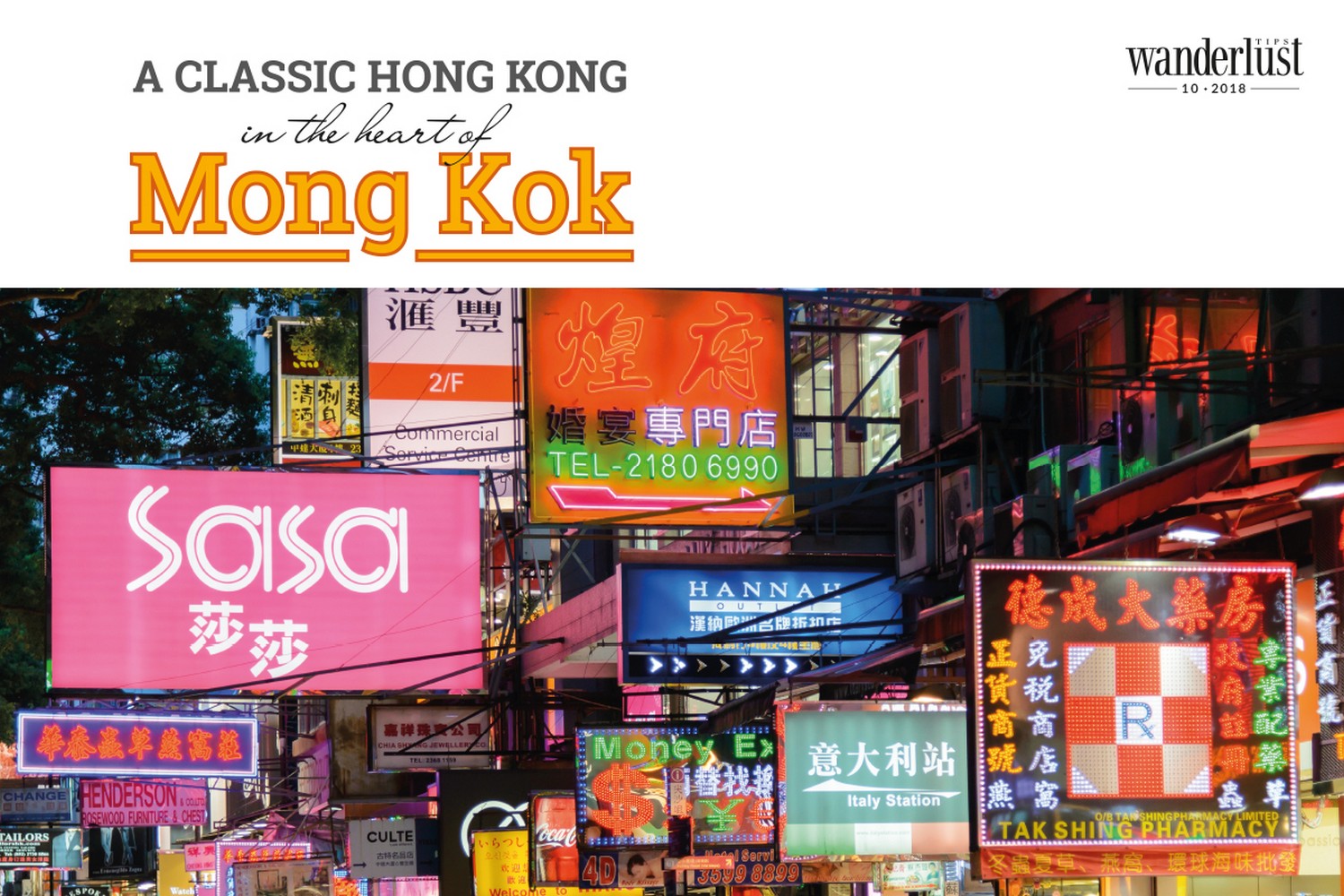
I often read books during the time spent traveling, but on the flight to Hong Kong, I could not concentrate on reading. I was so thrilled when arriving in Hong Kong, and filled with nostalgia when I had to leave Hong Kong. The flight from Hanoi to Hong Kong on a beautiful sunny morning still remains in my mind. Sometimes, the information of the plane position, remaining distance, and the landing time appeared on the screen. Looking at the electronic screen, I realized I was approaching the land where I considered “My Previous Life’s Homeland”. My heart throbbed and my mind trembled with excitement. The plane was landing. Through the window, Hong Kong appeared so tiny and surrounded by deep emerald green of the ocean and filled with countless boats sailing to the sea. My eyes filled with tears, my hands trembled and I burst into tears like a kid returning home after many years of wandering.
A CROWDED HONG KONG
After 30 minutes of traveling by double-decker bus and admiring Hong Kong’s spectacular scenery from the coastline next to the airport to city streets, my close friend and I got off the bus at the stop on Nathan street. The most crowded area of Mong Kok on the Kowloon Peninsula appeared so vibrantly. Mong Kok is an area in the Yau Tsim Mong District, on the western part of Kowloon Peninsula. Though the social status of people here is not as high as that of people living in the areas where many government offices can be found or other economic and cultural centres like Tsim Sha Tsui or Central, its breath of life bears a traditional identity. Walking on crowded streets, looking at residential buildings covered in faded lime paint and embedded with billboards, and hearing the sound of traffic signs and the rumblings of the locals, I really believed that I arrived at the heart of Hong Kong.
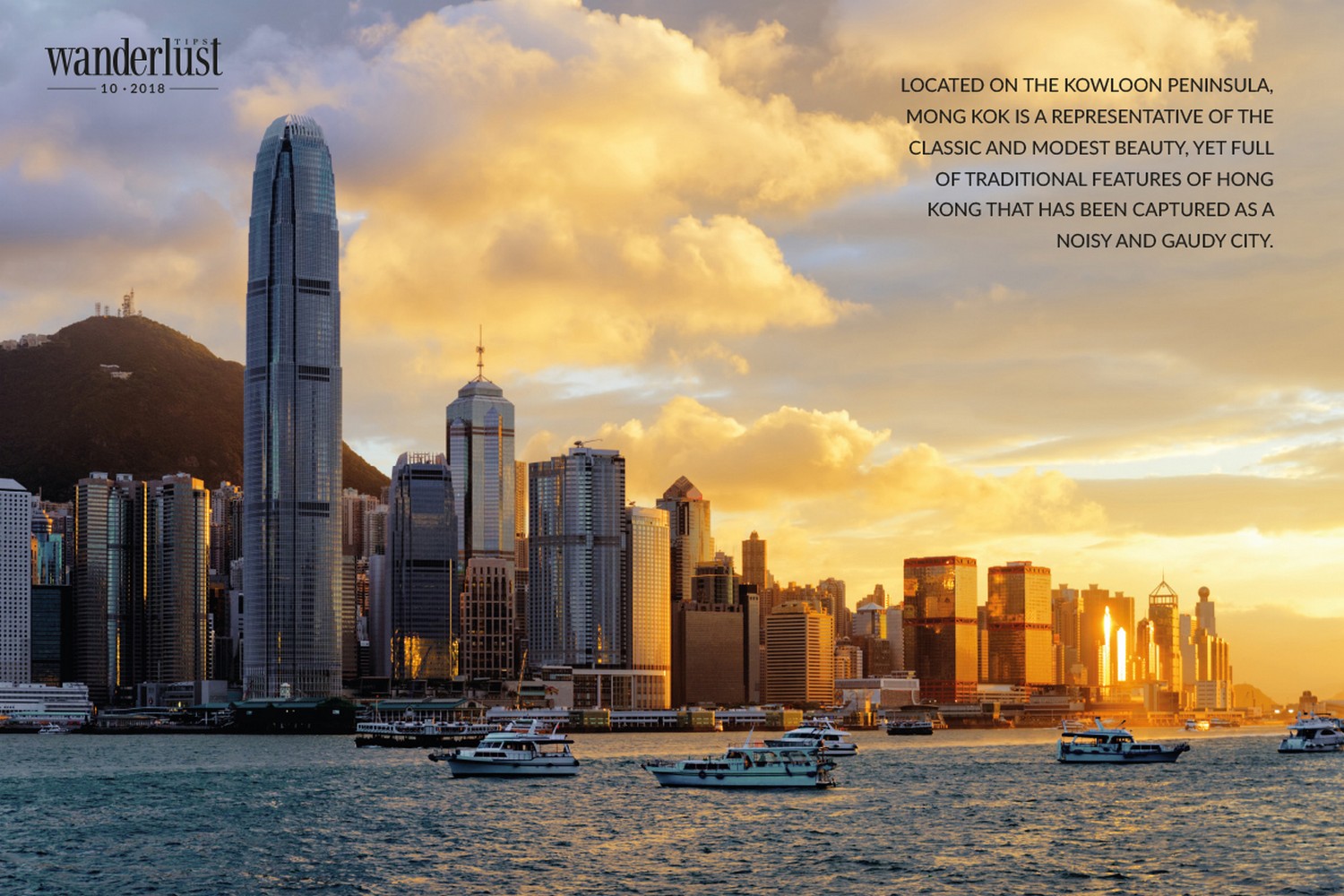
Most citizens in Hong Kong live in residential buildings, and they normally do not number the houses, which made it really hard for us to find them. So I had to call the landlord to ask for directions. Both he and I tried to describe our position, but all the instructions became useless as buildings and intersections here looked really alike. Even if we used shops like Seven Eleven, Mannings, or Sasa as the points to give directions, it was not possible because there were several stores of the same brand on the street. That’s why only after 1 hour of pulling my suitcase along the streets and asking passersby for directions, could I find my lodging-house.
Our lodging-house was on the 9th floor of an old residential building in Mong Kok. The building had a small entrance, colourful walls, a narrow passage-way running through apartments in four directions, and a large yard in the middle. This architecture originated from 1960-1970 and had a strong influence on houses of Chinese living in Saigon. There are a lot of lodging-houses and cheap hotels in Mong Kok; you can also find many appliance stores, cafés, bookstores, hair salons, and even classes here. Sometimes when wandering on the street, seeing the signboard of a store you would like to visit, you may have to go inside the apartment, walk up the stairs or wait for the elevator to go up in order to find that store. Walking in the passage-way of the building, I felt like I was finding the way to the houses of two characters played by Andy Lau and Maggie Cheung in the movie “As Tears Go By” by the director Wong Kar-wai.
Our lodging-house and my room were both really cramped, when opening the door we could step straight on the bed, and from the bed we could reach the door by taking only a single step. Though it was inconvenient, we had the opportunity to live like the locals in Hong Kong, because houses of people here were not much different from this lodging-house. Vast Hong Kong has become so small and cramped, as people from all walks of life gather here. People have to make use of every single metre of land to live and earn their livings. In Mong Kok, there are quite a lot of numbers of families living in houses with an area of only 10 square metres. They use bunk beds and keep their clothes and tools in bags to reduce the space used.
SLEEPLESS AT NIGHT AND WAKE UP LATE
As a part of Hong Kong, people in Mong Kok seem to be sleepless at night and wake up late in the morning. All activities of people here including going to school and traveling to work rarely begin before 9am. And they often leave the office and school at 7-8pm. The nightlife in Hong Kong has been bustling and vibrant for many decades due to this habit.
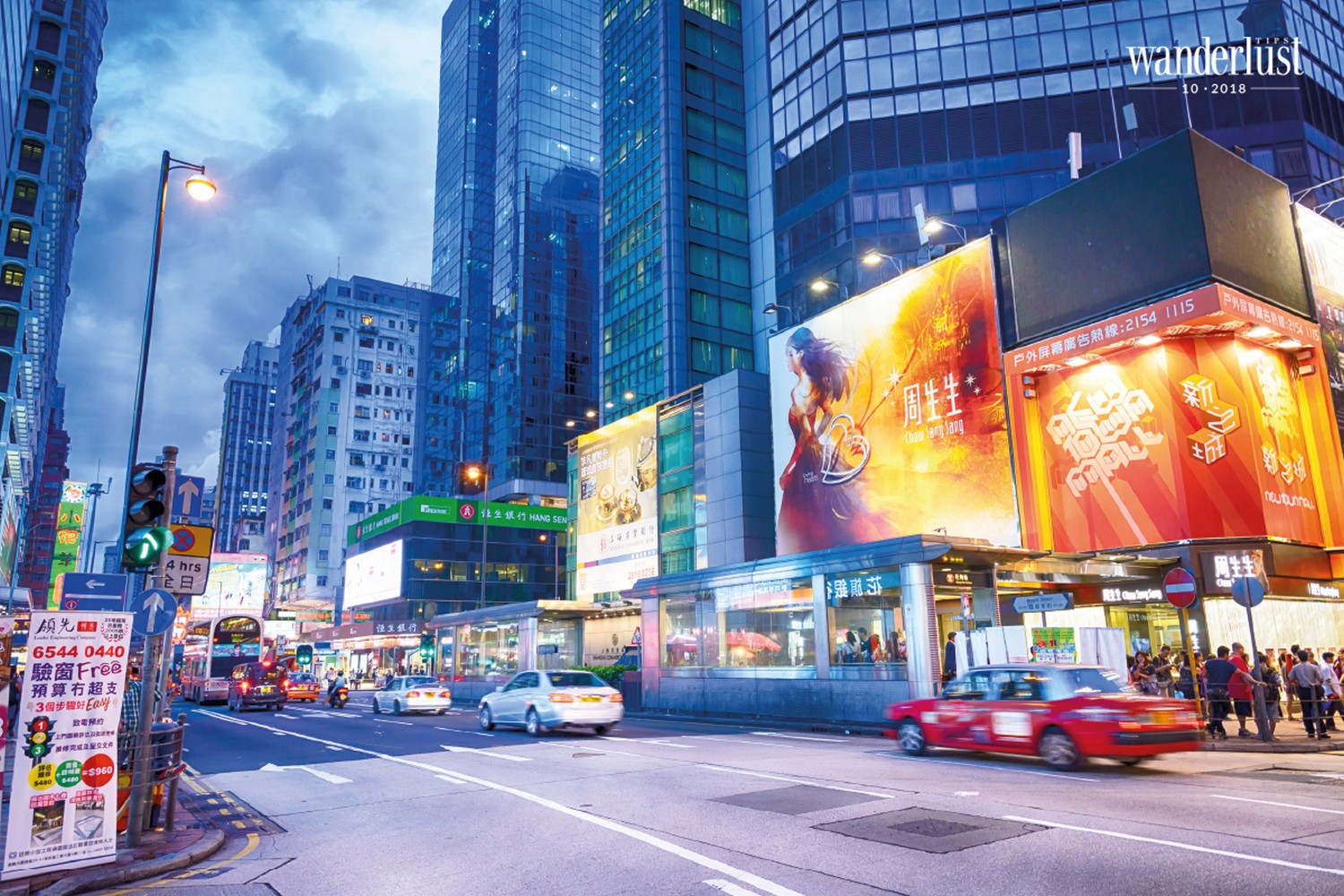
In the mornings, I often walked down the street at 7am, taking along my curiosity about different aspects of Hong Kong. In the chilly early morning, the monsoon blew and the sky was filled with clouds, people were not awake yet, stores were still closed, and there were only few people. I saw some Indian guys on the street, some Filipinos were loading goods and some middle-aged locals were squashing and loading cartons on rickshaws, then pulling them away. Many people from South and West Asia travel to Hong Kong for labour export; while women work as housekeepers for the locals, men get manual jobs. The labour market in Hong Kong is really interesting as both the elderly and the disabled join the workforce. Everyone is aware of their duties and the society gives them equal opportunities to earn money. I still remember my first night in Hong Kong, I happened to see a 70-year-old elderly man playing hu chin on the street. When visitors passes by, he played even more passionately. He said he came from China Mainland and there were many Guangdong people playing instruments in Lady market every evening to earn some money by using their talents.
Being immersed in the quiet atmosphere, I leisurely walked through the streets, small lanes, and listened to the tik tok sound of traffic lights, which reminded me of the image of each drop of phin coffee or filtered coffee dripping slowly into a glass. The pace of life slowed down, swept away all the hustle and bustle, and brought back the peaceful beauty of this land. In Hong Kong, you have to strictly abide by the law when walking on the streets, for example, you are only allowed to cross the road on the zebra lines and in accordance with the traffic light.
Mong Kok is most bustling after 7pm. The bright colourful neons of signboards shining on the street blur the boundaries of day and night. Except for the main road Nathan, all small streets become pedestrian-only thoroughfare or night market after 7pm and all vehicles are forbidden. Along the street, we saw several newspapers stalls, nestled next to CDs stores, while some ice cream trucks stopped at a street corner where visitors often passed by. The homeless sat in silence in corners. Protesters set their place to deliver a speech. Street artists played instruments while singing beside high-end skyscrapers and on avenues filled with bright lights. Hong Kong also has an abundance of small, winding alleys that led us to explore many diverse aspects of life.
THE LAND OF AFTERNOON TEA DEVOTEES
I was not too picky when choosing a place to eat while travelling. Wandering on the street, finally, I found an ancient restaurant by the roadside in Mong Kok. During the first night, we enjoyed hot and greasy delicious skewers that were full of flavours with spices. We ate the skewers while standing like real Hongkongers. At those moments, a thought popped into my mind that if we visited Mong Kok in the winter, it must be amazing to taste the world-renowned hot street food in the cold weather.
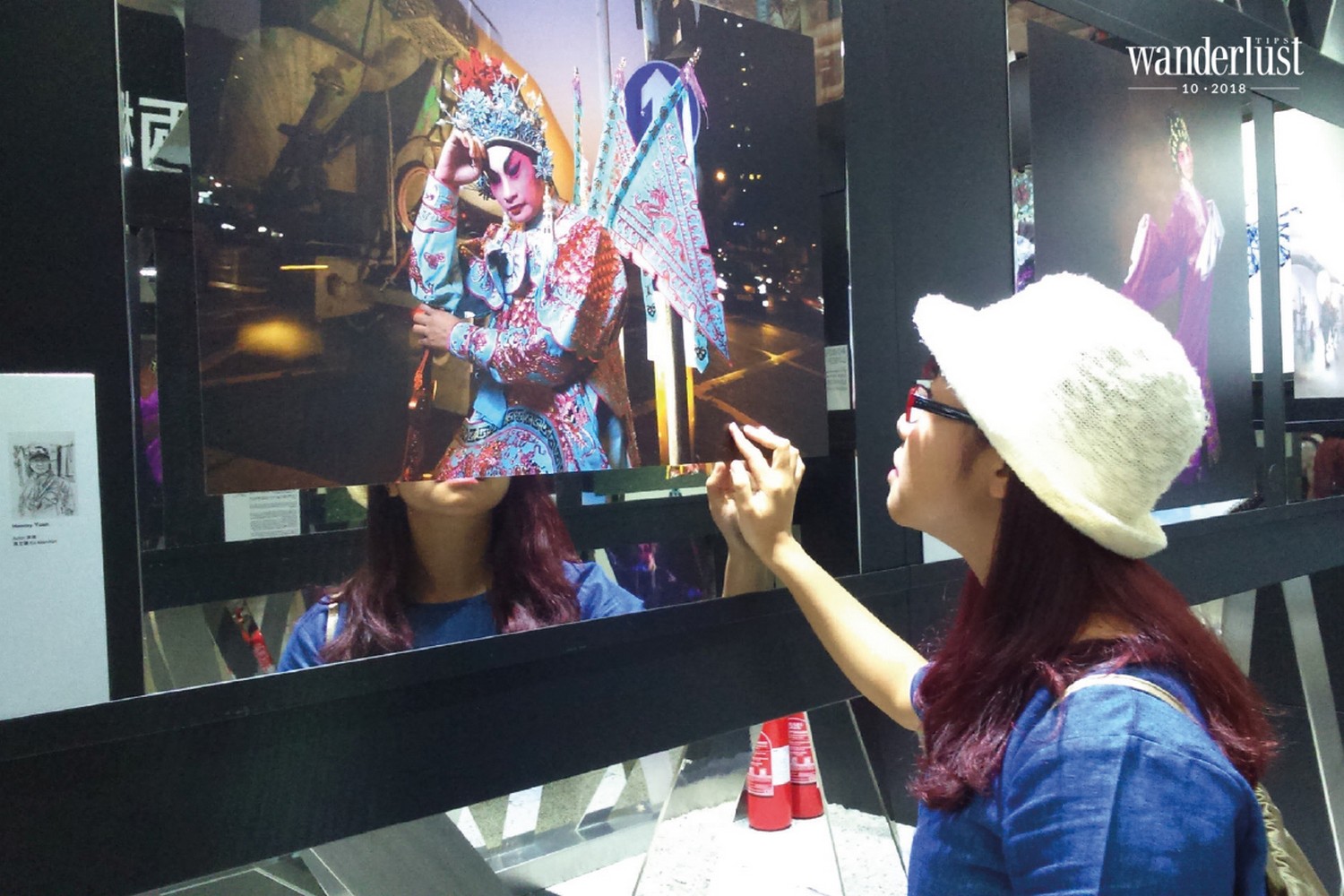
Many stores in Mong Kok are open day and night and customers are served by kind middle-aged waiters. A normal restaurant is not often decorated in details; the owners only arrange rectangular tables in rows while chairs are placed right next to each other to reduce the space used. The highlight of these restaurants is the smoke filled with the smell of fragrant food. The menus often recommend many famous dishes in Hong Kong like wonton noodle soup, stewed beef brisket with rice noodles, sandwiches, Hong Kong rolled cake, meat porridge served with hot youtiao, and soya milk, to name a few. The only thing that Hong Kong lacks is vegetables because there is not much land for agriculture here.
For me, I was most impressed with their everyday afternoon tea. Hongkongers may miss breakfast, enjoy late lunch and dinner, but they never forget their afternoon tea. It is the time when people from all walks of life gather in restaurants to enjoy their afternoon tea. The elderly leisurely read books, sip tea, and enjoy sweet cakes or hot dumplings. The youth will chat with each other while eating light snacks. Two of the most famous and elegant drinks of Hong Kong are milk tea and lemon tea, which are very suitable to enjoy at 3-4pm at restaurants by the roadside. The milk tea features the bitterness of tea and the creamy flavour of milk. Those who love sweetness may add more sugar. Egg cakes or butter jam filled with pineapple buns are enjoyed as a light meal as it is not too greasy and embraces true Hong Kong culture.
Spending more than one week in Hong Kong, I was able to visit many beautiful sights each day. Mong Kok was like my home, where I left in the morning and returned in the evening. It was where I retained my nostalgia for enjoyable meals, pleasant conversations with the locals, and joyful singing and dances when we listened to familiar melodies. The most striking feeling arose when I stood at the intersection, listened to the traffic lights ringing, and looked at the pedestrians on either side of the road flocking into the road, hurrying but rarely bumping to each other. At that moment, I felt like I became a part of this land. Time elapsed so fast but traditional cultural values were still preserved. If I had to name my last emotional vibration for this journey, indeed it would be nothing but “found”. After years of wandering, finally, I found my Hong Kong, my Mong Kok as I always dreamed of.
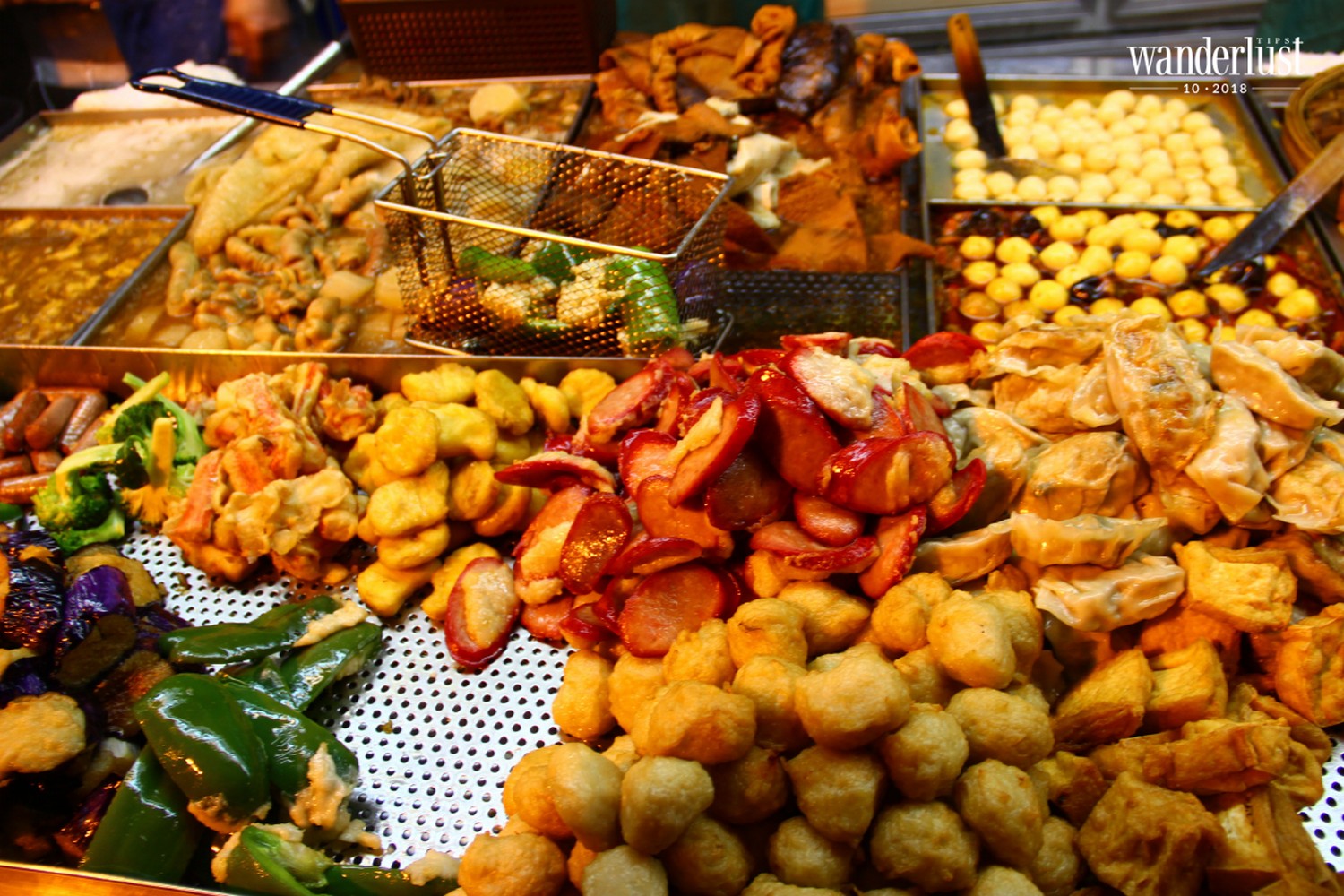
W. TIPS
FLIGHTS TO HONG KONG. From Vietnam, you can take direct flights with Vietnam Airlines, Hong Kong Airlines, Cathay Pacific, and Jetstar Pacific to Hong Kong International Airport. VISA Hong Kong grants a visa-free stay for 7 days for tourists from Vietnam, and it must be submitted one month in advance.
CURRENCY. Hong Kong Dollar (HKD). HKD1 ~ VND2,969 (current exchange rate). Hong Kong offers a different range of expense for tourists, depending on their utilization of high-end or affordable services.
CLIMATE. Hong Kong’s climate is similar to Vietnam’s; it has four seasons, and the temperature difference between the two countries is not big.
ACCOMMODATION. In Hong Kong, you can find many kinds of hotels, hostel, and homestays offering rooms or dorms that range from HKD100 per night (~VND300,000 per night).
TRANSPORTATION IN HONG KONG. After arriving at the airport, it is recommended to buy an Octopus card. It is known as a magical card which you can use to make payment when traveling using 11 kinds of transport: MTR, double-decker bus, minibus, tram, ship, boat or high-speed train. Or it can be used to buy goods at supermarkets or convenience stores.
SOUVENIRS. You can buy traditional cakes such as sweetheart cake, egg cake, peanut cake, tea or mooncake, and Lunar New Year cake on special occasions. In addition, postcard imprinted with pictures and paintings of Hong Kong are meaningful as well.
Wanderlust Tips


[…] let Around Hong Kong through famous movies help you enjoy the aftertaste of nostalgia and romance in Hong Kong dubbed as Hollywood of Asia in […]